Battle of Blair Mountain Historical Marker
Introduction
Text-to-speech Audio
Images
This historical marker on Blair Mountain Highway was dedicated in 2002.
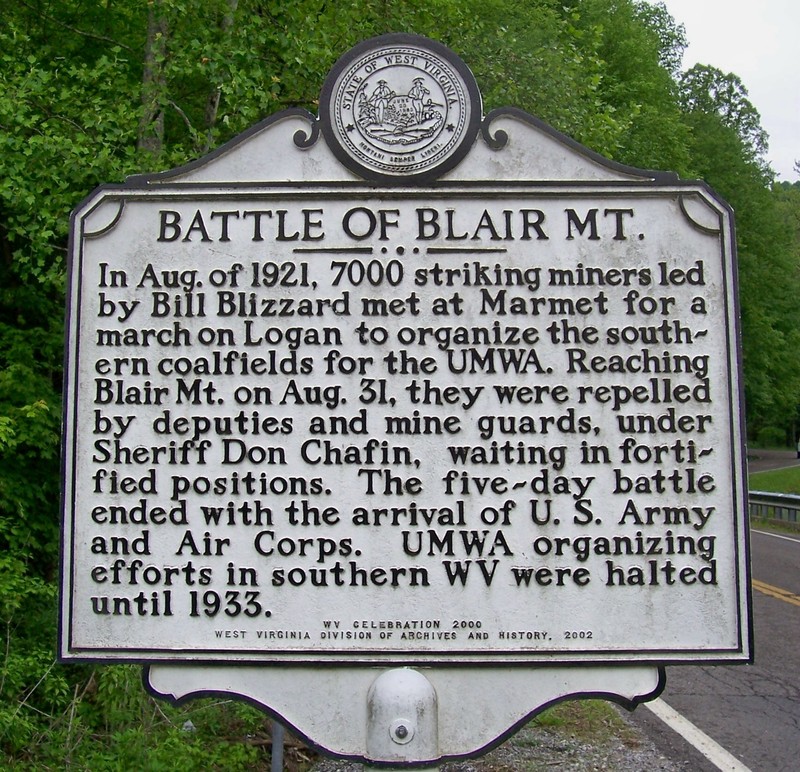
United Mine Workers of America
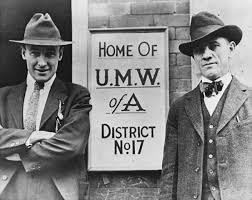
Sheriff deputies during the battle.
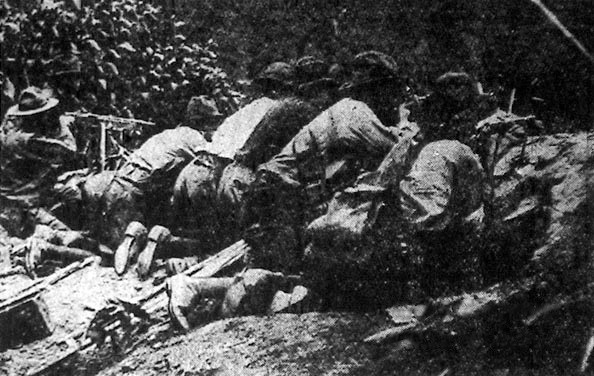
Federal troops camped at Blair Mountain.
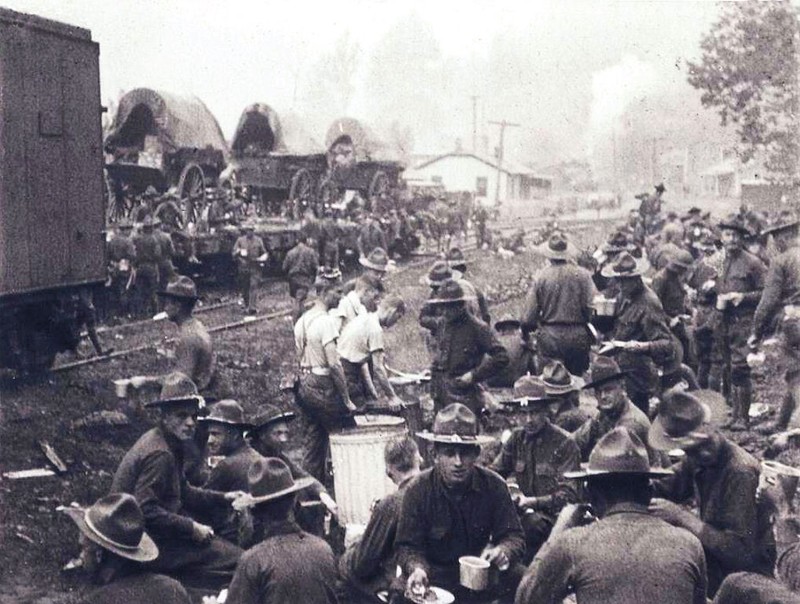
Miners showcase the un-exploded bomb at Blizzard's trail.

Blair Mountain Machine Gun Nest (1921)

Miners Surrender Their Rifles (1921)
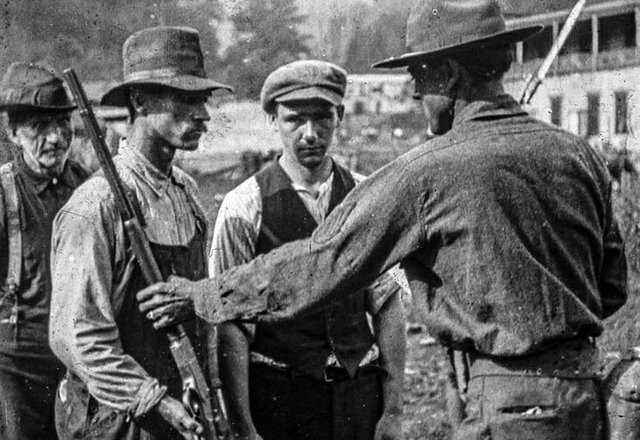
Miners After the Battle

Washington Times, Sept 1, 1921, featuring a headline on the Battle of Blair Mountain.
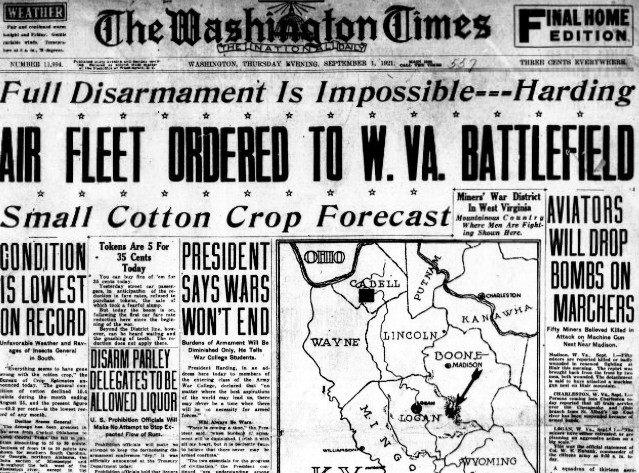
Learn more about the larger conflict with Lon Savage's Thunder In the Mountains: The West Virginia Mine War, 1920–21. Click the link below to learn more about this book.
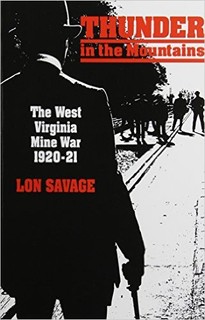
Protest to Save Historic Site from Mountain Top Removal (2011)
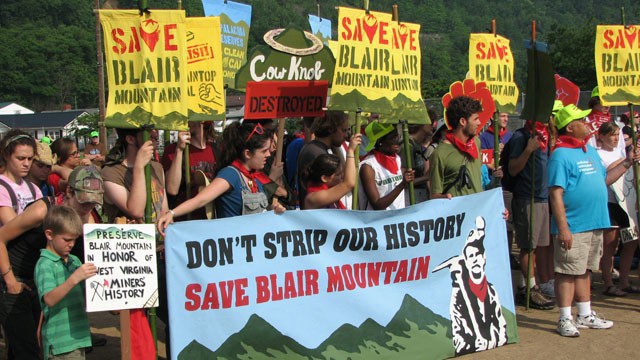
Backstory and Context
Text-to-speech Audio
From 1912-1922 the increasingly violent Mine Wars waged in the southern coalfields of West Virginia. Miners of the state joined with the United Mine Workers of America to help liberate southern mines and to change the unfair wages that were enforced by the oppressive coal companies the miners worked for. The coal operators responded by using their power and wealth in an attempt to end what they say as a rebellion. Major conflicts of the mine wars include the Paint Creek-Cabin Creek Strike in 1912, the Battle of Matewan or the “Matewan Massacre” in May 1920, and the Battle of the Tug. The Battle of Blair Mountain was the climactic end to the Mine Wars of West Virginia.
In August 1921, an estimated force of 7,000 to 20,000 armed miners gathered in the town of Marmet with the goal to march south and unionize and liberate the southern West Virginia coal mines. Charismatic individuals, such as William “Bill” Blizzard, were respected leaders of the march, along with veterans of the first World War. Thanks to the many who had previously served in the war, it proved to be effective when forming like a true armed military, given they were armed with mere hunting rifles and pistols. To show their support of the union, many wore red bandannas around their necks to identify themselves. Due to this gesture of unity, a national newspaper coined the miners as “rednecks,” giving birth to the term. The miners walked, rode and drove vehicles, and even commandeered a train to transport them to the southern coalfields.
The large armed force moved south to the border of Boone and Logan county without resistance, until they were met by state police, volunteer militia, and Logan County sheriff, Don Chafin. Coal companies had also hired guns who had amassed along the ridge of Blair Mountain. The miners faced machine guns, small arms, and even crude bombs which were dropped from small airplanes. West Virginia Governor Ephraim Morgan urgently requested federal assistance to end the skirmish, which President Warren G. Harding sent 2,500 federal troops along with a small bomber squadron to disperse the conflict. The miners laid down their arms once they met U.S. troops, for they did not wish to harm those they respected. To this day, the number of casualties is roughly unknown. Many miners would be charged with murder and treason, including their leader William “Bill” Blizzard, who would be acquitted of these charges once evidence of homemade bombs that were dropped from Sheriff Chafins’ private plane was brought forth.
The Battle of Blair Mountain remains the largest labor uprising in American history. Though the coal companies succeeded in suppressing the right to unionize in West Virginia, the Blair Mountain battle would resonate greatly for future labor laws throughout the country. The conflict put the dangerous, oppressive conditions of coal miners into the national spotlight, and in 1935 President Franklin D. Roosevelt signed the National Labor Relations Act, also known as the Wagner Act.
In 2006, the Blair Mountain battlefield was deemed an Endangered Historic Place by the National Trust for Historic Preservation. In 2009, the battlefield was added to the National Register of Historic Places, a list of significant historic sites administered by the National Park Service, an agency of the Department of the Interior. Yet just one week later, the State Historic Preservation Officer (SHPO) of West Virginia requested the site be removed, claiming property owners rejected the National Register listing. The National Register of Historic Places helps legitimize a historic site and can facilitate preservation through tax credits, federal grants, and consideration in federal projects like highways. While the National Register still gives property owners the right to do what they want with the property, it does require the historic value of a site to be considered in the issuing of surface mining permits. At Blair Mountain battlefield, some of the largest coal companies hold permits to engage in surface mining, also known as “mountaintop removal” for its destructive effects on the natural landscape. At the urging of a coal company lawyer, the Blair Mountain battlefield was officially removed from the National Register of Historic Places by the end of 2009. Coal companies praised the Department of the Interior’s decision, while preservationists feared the loss of the historic site. Blair Mountain’s 1,700-acre battlefield encompasses trenches, earthworks, foxholes, and numerous artifacts, including weapons and shell casings.
On June 21, 2018, a decision was signed upon by Joe Beasley, National Park Services Keeper of the Register, to make it so that Blair Mountain Battle site would be placed back of the NRHP. This has given the people of the Blair area, and of West Virginia as a whole, a sense of great victory and final accomplishment for those who sacrificed themselves for freedom.
Sources
"America's 11 Most Endangered Historic Places—Past Listings." National Trust for Historic Preservation. Accessed May 2018. https://savingplaces.org/11most-past-listings?_ga=2.118025929.1187360086.1526307475-1581926724.14382...
Bailey, Kenneth. "Battle of Blair Mountain." E-WV: The West Virginia Encyclopedia. Accessed May 2018. http://www.wvencyclopedia.org/articles/532.
Corbin, David A. "Mine Wars." E-WV: The West Virginia Encyclopedia. Accessed May 2018. https://www.wvencyclopedia.org/articles/1799
Davidson, Shae. "Blizzard Treason Trial." E-WV: The West Virginia Encyclopedia. Accessed April 14, 2015. http://www.wvencyclopedia.org/articles/548.
Keeney, Charles B. “The Battle of Blair Mountain Is Still Being Waged.” The Cultural Landscape Foundation. February 26, 2018. Accessed May 2018. https://tclf.org/battle-blair-mountain-still-being-waged
Nida, Brandon. "Sept. 4, 1921: Battle of Blair Mountain Ends." Zinn Education Project. Accessed May 2018. http://zinnedproject.org/2015/09/battle-of-blair-mountain-ends/
Ward, Ken. "Court vacates Blair Mountain delisting from Historic Places registry." WV Gazette Mail. April 11, 2016. Accessed May 2018. https://www.wvgazettemail.com/news/cops_and_courts/court-vacates-blair-mountain-delisting-from-histo...
Mishkin, Kate. Blair Mountain Battlefeild back on National Register of Historic Places, Charelston Gazette-Mail. June 21st 2018. Accessed February 11th 2020. https://www.wvgazettemail.com/news/blair-mountain-battlefield-back-on-national-register-of-historic-places/article_98d954c4-4ea6-5881-b3e7-efb42ee8c1ff.html.
https://www.wvpublic.org/post/january-23-1890-united-mine-workers-america-formed#stream/0
https://libcom.org/gallery/battle-blair-mountain-1921-photo-gallery
https://progressive.org/dispatches/blair-mountain-battlefield-re-listed-as-historic-site-180702/
https://tclf.org/battle-blair-mountain-still-being-waged
https://www.zinnedproject.org/news/tdih/blair-mountain-ends/
http://www.cnn.com/2011/US/06/14/soledad.blair.mountain/index.html
